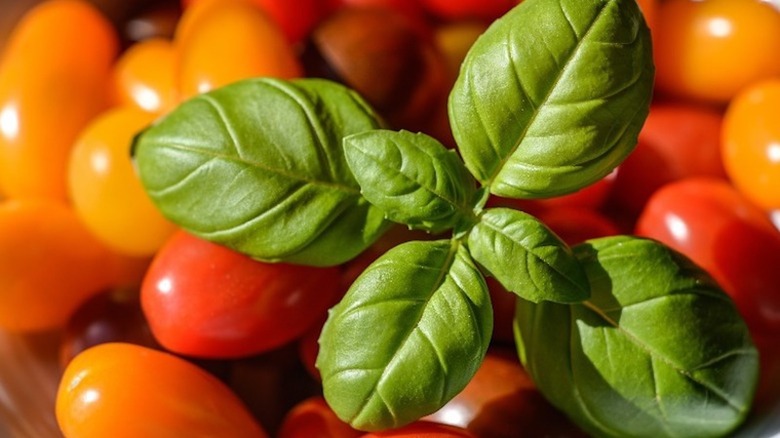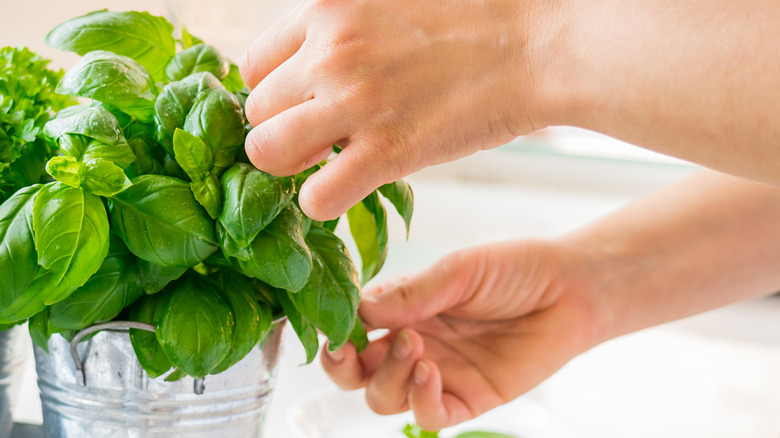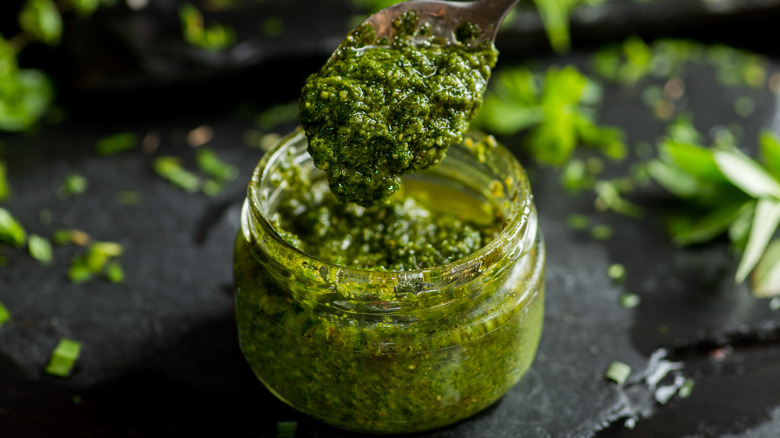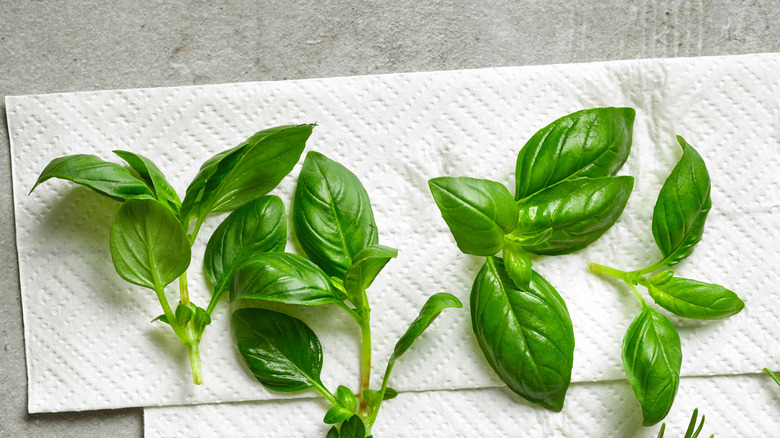3 Best Ways To Store Basil
Basil is a versatile ingredient that can be used to add a distinct flavor (or look) to a dish, such as a Caprese salad, or used for the base of a recipe, like pesto. Similar to most herbs, fresh basil has a much bolder taste and brighter appearance than the dried version you get from a spice rack. Still, with grocery stores often selling this herb in large bunches, it's not easy to use it all up before it starts to wilt and ultimately, lose its fresh flavor.
According to Epicurious, basil is the herb most commonly cooked with in the United States, and with the plant making an appearance in so many dishes, one question often comes up: How can basil be kept fresh for more than a few days? It turns out there are a number of secrets to getting this herb to keep its vibrant look and robust flavor for a bit longer, with some methods working a little better than others.
In a bouquet
The most tried and true method for storing basil is what outlets like All Recipes refer to as the "basil bouquet." Like its namesake, this method requires the basil to be treated like a delicate flower. Upon bringing the herb home from your local farmers market or grocery store, immediately trim the bottoms of the stems, then place the basil in a glass with a small amount of water, leaving them on the counter at room temperature.
Food52 recommends cutting the basil stems every few days to allow the plant to absorb the water even better. Changing the water every few days helps as well — the same as you would do with fresh flowers. The outlet also mentions that some people swear by loosely covering the herb with plastic, such as a piece of saran wrap or a plastic bag. However, it appears that, per an experiment, it's best to let the basil breathe with no covering. Still, leaving it at room temperature, covered or uncovered, kept it fresh for much longer during the experiment than any method involving refrigerating the basil.
Freezer
While refrigeration isn't the best way to keep this herb fresh, it seems that freezing basil could be an option for those looking for a long-term solution. Still, it isn't as simple as purchasing the plant and sticking it in the freezer.
According to All Recipes, when freezing basil you'll want to use only the leaves of the herb — and it's best done in the form of a paste. To do this, rinse and then blanch the basil by submerging it in boiling water for 10 seconds. Immediately transfer the herb to a bowl of ice water and then dry well with paper towels, or better yet, a salad spinner. Place the leaves in a food processor and add a small amount of olive oil, just enough to turn the basil into a thick paste with a similar consistency to pesto. Process until blended, and place the paste in a freezer-safe container, where it can be stored for as long as three months.
Paper towel method
One other option for storing basil, which The Spruce Eats considers the second-best method (the first being the basil bouquet method mentioned above) is to store it in the same fashion as fresh salad greens. The outlet recommends washing the basil, then picking the leaves off of the stems. From there, lay them out on a paper towel in a single layer, making sure not to overlap the leaves.
Once the basil leaves are laid out, wrap the paper towel up, and store the leaves in a plastic bag. The Spruce Eats doesn't mention storing the leaves in the refrigerator, and other outlets have suggested the room temperature method works better than refrigerator storage. Still, for this method, both are an option.
Ultimately, it appears storing the basil in water at room temperature works better for making those leaves last. Those looking for a long-term storage option are better off grinding the leaves into a paste for easy freezer storage.



